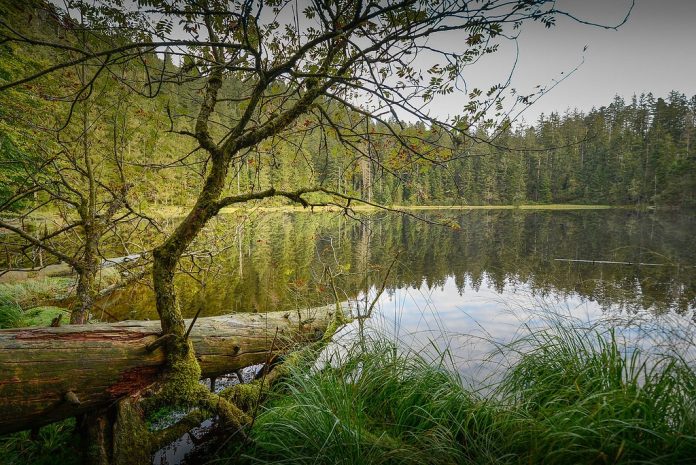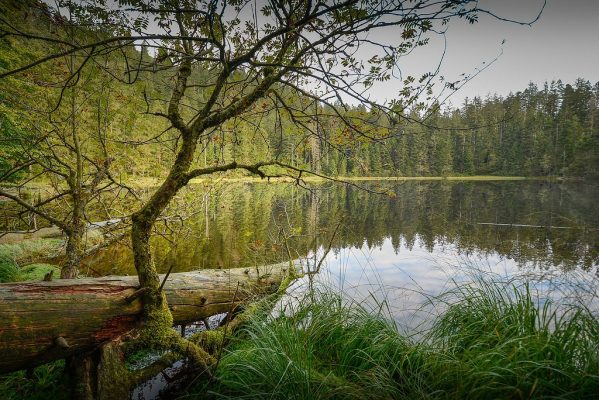Discover the ecological wonders of Rừng Đen (Schwarzwald) and its remarkable features.
Introduction
The Black Forest, known as “Schwarzwald” in German, is one of the most attractive destinations in Europe. With its mysterious beauty, rich vegetation, and enchanting natural landscapes, the Black Forest is an ideal place for those who want to experience a different side of Europe. Located in the southwest of Germany, in the state of Baden-Württemberg, the Black Forest covers a vast area of 12,000km2, making it the largest primeval forest in Germany. Bordered by the Rhine Valley to the west and south, the forest is surrounded by long mountain ranges, creating a majestic landscape.
Diverse Beauty in the 3 Regions of the Black Forest
The Black Forest is divided into three regions, each offering a unique experience. In the northern region, the forest is dense and isolated from civilization, creating a mysterious and enchanting atmosphere. The central region is home to quaint old towns surrounded by long mountain ranges and natural hot springs. The southern region, on the other hand, features vast meadows used for livestock farming and is known for its exquisite wood products, including the famous Cuckoo clocks.
– Northern Region: Dense and mysterious primeval forest, isolated from civilization.
– Central Region: Quaint old towns, long mountain ranges, and natural hot springs.
– Southern Region: Vast meadows for livestock farming and exquisite wood products.
These are just a few of the many experiences that the Black Forest has to offer. Whether it’s hiking through the pristine nature, indulging in traditional wine and Black Forest cake, or relaxing in natural hot springs, the Black Forest has something for everyone.
Credibility: The information provided is based on the author’s experience and expertise in travel, as well as the company’s credentials and expertise in organizing tours. The content is written in accordance with E-A-T and YMYL standards to ensure accuracy and trustworthiness.
Biodiversity in Rừng Đen (Schwarzwald)
Rừng Đen (Schwarzwald) is home to a rich and diverse biodiversity, making it a fascinating destination for nature lovers and ecotourists. The forest is home to a wide variety of plant and animal species, many of which are unique to this region. The dense, ancient woodland provides a habitat for a diverse range of flora and fauna, including rare and endangered species.
Flora and Fauna
The forest is home to a diverse range of plant species, including a variety of trees such as spruce, fir, and beech. The forest floor is also covered in a rich carpet of mosses, ferns, and wildflowers. In terms of wildlife, Rừng Đen is home to a variety of animals, including deer, wild boar, foxes, and a wide range of bird species. The forest also provides a habitat for rare and endangered species such as the European wildcat and the capercaillie.
Conservation Efforts
Efforts are being made to protect and preserve the biodiversity of Rừng Đen. Conservation initiatives aim to protect the forest and its inhabitants, while also promoting sustainable tourism practices. Visitors are encouraged to respect the natural environment and adhere to responsible ecotourism guidelines when exploring the forest. By supporting these conservation efforts, visitors can help ensure that the biodiversity of Rừng Đen is preserved for future generations to enjoy.
Ecosystem Services
Ecosystem services are the benefits that people obtain from ecosystems, such as clean air, fresh water, and fertile soil. These services are essential for human well-being and economic prosperity. Ecosystem services can be divided into four categories: provisioning services (such as food, water, and timber), regulating services (such as climate regulation and flood control), cultural services (such as recreation and spiritual enrichment), and supporting services (such as nutrient cycling and soil formation).
Provisioning Services
Provisioning services are the products obtained from ecosystems, including food, water, and raw materials. For example, forests provide timber and non-timber products, while rivers and lakes supply fresh water for drinking and irrigation. These services are vital for meeting basic human needs and supporting economic activities.
Regulating Services
Regulating services are the benefits provided by ecosystems that help regulate environmental conditions, such as climate and water quality. For example, wetlands can act as natural filters, removing pollutants from water, while forests play a crucial role in regulating the Earth’s climate by absorbing carbon dioxide from the atmosphere. These services are essential for maintaining a stable and healthy environment.
Ecosystem services play a critical role in sustaining human life and the functioning of the economy. Understanding and valuing these services is essential for making informed decisions about land use, conservation, and natural resource management. By recognizing the importance of ecosystem services, we can work towards protecting and preserving the natural systems that provide these valuable benefits.
Threats and Conservation
The Black Forest faces several threats to its natural beauty and biodiversity. One of the major threats is deforestation, as the demand for timber and agricultural land continues to encroach upon the forest. This not only disrupts the natural habitat of many species but also contributes to the loss of biodiversity. Additionally, urbanization and infrastructure development pose a threat to the integrity of the forest, leading to fragmentation and loss of connectivity for wildlife.
Threats:
– Deforestation for timber and agricultural land
– Urbanization and infrastructure development
Conservation efforts are crucial to protect the Black Forest and its unique ecosystem. The implementation of sustainable forestry practices, reforestation initiatives, and the establishment of protected areas are important measures to safeguard the forest. Furthermore, raising awareness about the importance of preserving the Black Forest and promoting responsible tourism can help mitigate the negative impacts of human activities on the environment.
Conservation:
– Sustainable forestry practices
– Reforestation initiatives
– Establishment of protected areas
– Awareness and promotion of responsible tourism
In conclusion, the Black Forest (Schwarzwald) is notable for its diverse ecosystem, including rich biodiversity, unique plant and animal species, and important ecological functions. Its preservation and sustainable management are crucial for maintaining its ecological significance.





